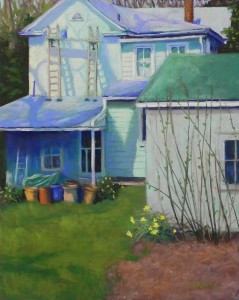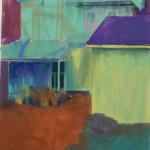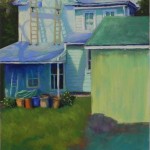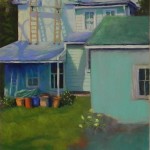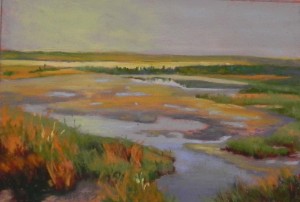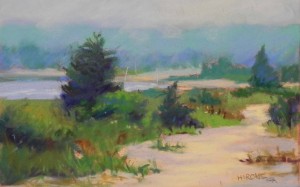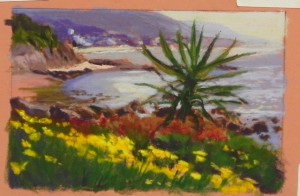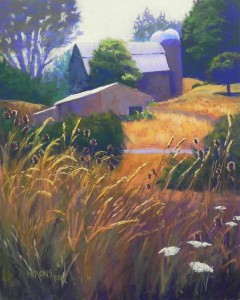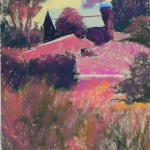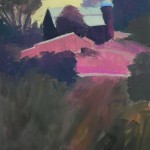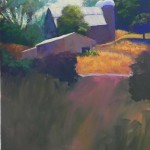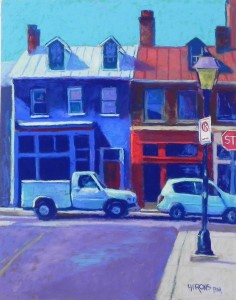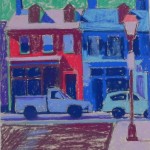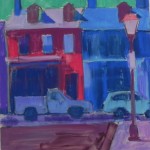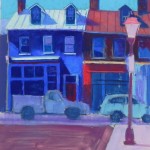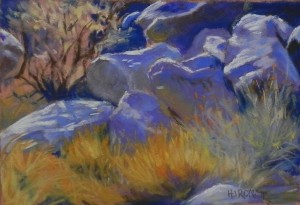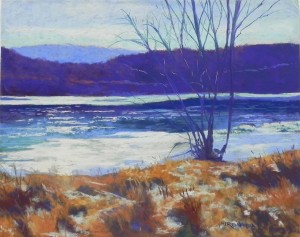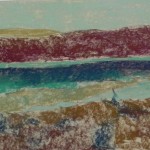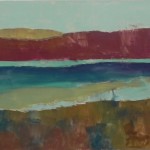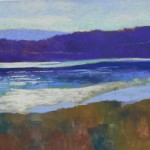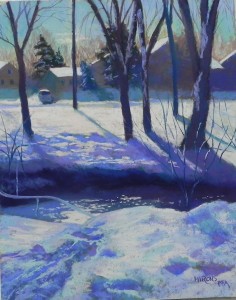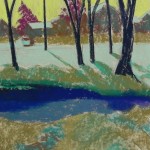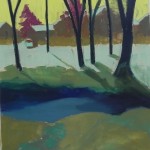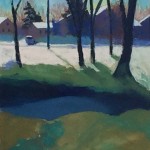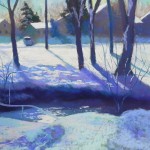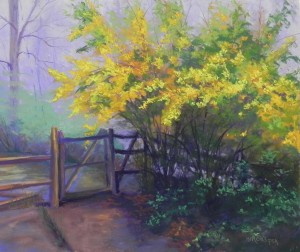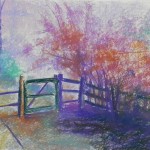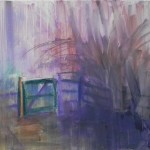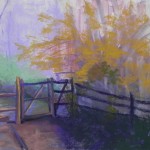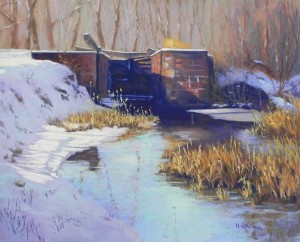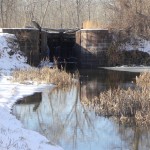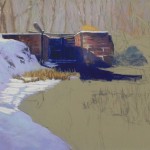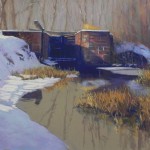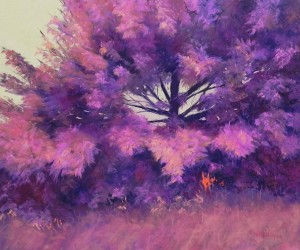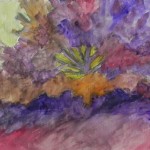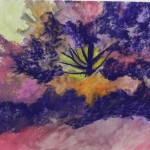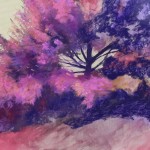Hello Friends. I hope you are fairing well and keeping your spirits up. We are all in this together! I’ve been playing piano, listening to classical music on the radio and painting. For the past week I’ve spent happy hours working on this painting of a house in Rockville that I filmed last Monday. I loved the shadows that the ladders cast, the array of pots (I changed the colors!), and the early spring daffodils. But the picture seems like a picture of the times: No one is coming back to continue the painting of the stucco wall and there are no plants to fill the pots! But spring carries on.
The photograph was interesting due to the shadows but it was almost all white! The garage is actually white and in bright sunlight. I knew this was going to be a problem! (More later). I did a very colorful underpainting and fell in love with it. I really wanted to just keep it as it was! So 20th century modernism-looking!!! But, of course, that’s not me. Soooo….
I painted everything in this picture, with the exception of the daffodils in the foreground (which weren’t in the picture) with Giraults. They just worked so well for the subtle layering that I wanted. For the house, I used a combination of light violets, blues and greens, along with a light warm orange or the areas of brightest sunlight. The roofs have slightly darker combinations of the same colors.
The shadows were a challenge. I added a can of paint that wasn’t there and tried to indicate a shadow of it. My major problem was using different colors and then trying to make them more similar. In addition to the ladders, there is a tree casting a shadow that seemed pretty interesting. And there is the big V of sunlight ont he green wall below. I was concerned that this might be too prominent and softened the edges with my finger.
The area with the pots was another challenge. There was a bush that I tried to add, then took out. I included the tarp-covered grill–which my husband said I should leave out–it filled the space and it is definitely something someone would have on their back porch at this time of year. I wanted to keep the pots more suggestive than highly defined. I ended up doing some of them several times and brushing off but I was finally happy with them. I covered the lovely red orange with green and it started to look more real. (By the way, while this is early spring, the house has an evergreen and a magnolia surrounding it, so there is a lot of green on the upper sides.)
So then I got to the garage. I knew i would add a daffodil but I really didn’t know where I’d go with the color. The roof is green and i used several cool greens and decided that this worked very nicely. But then I got to the wall. I tried several combinations of colors, I tried adding horizontal lines, I brushed it off twice! After the second brush off, I wetted it to get back to the original underpainting, then I did a new one over it, using a green and a blue that became a lovely robin’s egg blue! This color worked much better with the house. I then used some light layers of blue greens and browns, subtley indicating vertical boards and adding a window. I was much happier! I resisted adding any bright light to the garage in order to keep the eye focused on the house. I then added the fig trees and the mulch in front of them. I like the fact that the mulch provides a shape of different color that complements the green grass.
When this is framed, I’m going to lose the top of the painting, which is not so good. But, I’m otherwise pleased.
As I was working on this painting, I thought about why it is that I love to paint the backs of houses, alleys, etc. I realized that they tell much more of a story about the house and its inhabitants than the more formal fronts. The disarray of pots and stuff is so much more interesting than the chairs on the front porch. And the work in progress also adds a note of informality. This seems to be my specialty and I was happy to find a subject so close to home to explore. Now I need to find more!
I hope you too are finding some interesting subject matter to engage you. Stay safe and keep your spirits up. This, too, shall pass.

